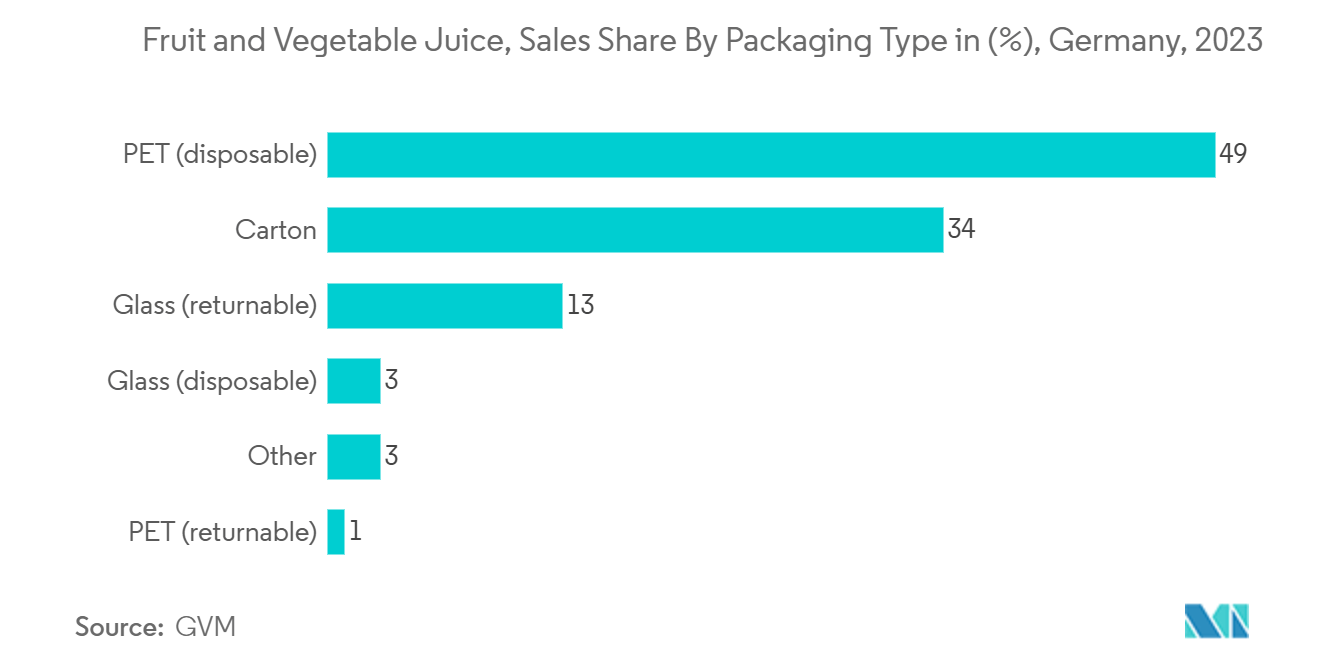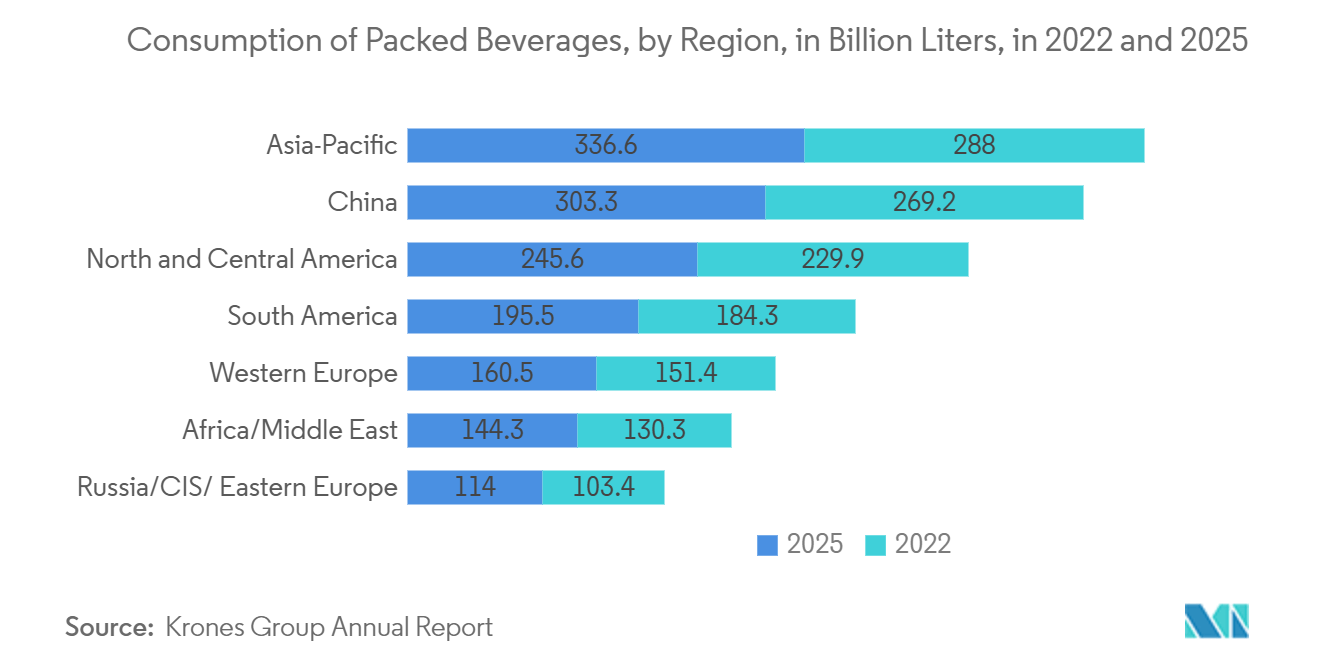Market Trends of Automatic Labeling Machine Industry
The Beverages Segment to Hold a Significant Market Share
- The increasing demand for automation in the beverages industry drives the automatic labeling machine market. Labels are crucial in providing product information and boosting sales as consumers become more conscious about product details. Manufacturers are shifting to automated labeling systems to meet the growing beverage demand. Automatic labeling machines offer several advantages over manual labeling processes. These machines increase efficiency, reduce labor costs, and improve accuracy in label placement. They can handle various container shapes and sizes, accommodating the diverse packaging needs of the beverages industry. Additionally, automatic labeling machines can operate at high speeds, enabling manufacturers to meet increased production demands.
- The beverages industry's need for consistent branding and regulatory compliance further fuels the adoption of automatic labeling machines. These systems can apply labels with precise positioning, ensuring a uniform appearance across product lines. They also help manufacturers comply with labeling regulations by accurately applying required information, such as nutritional facts, ingredients, and expiration dates. As the beverages industry expands and diversifies, the demand for flexible and efficient labeling solutions is expected to grow. This trend will likely drive further innovations in automatic labeling machine technology, including improved integration with production lines and enhanced customization capabilities to meet specific industry requirements.
- Beverage manufacturers face several challenges, including labor shortages, increased demand, and persistent supply chain disruptions. Food packaging automation is crucial for these organizations as it enhances manufacturing productivity without requiring additional labor. As demand is expected to rise over the next few years and workforce shortages continue, packaging automation will likely become increasingly important. Consequently, manufacturers are adopting technological solutions. Advancements in Industry 4.0 technologies are poised to transform food manufacturing in the coming decade.
- Due to increasing demand for the food and beverage industries, manufacturers are continuously investing in innovating with labeling machines. The growing beverages industry further drives the need for fast, automatic label machines. This demand is fueled by the industry's requirement for efficient and accurate labeling solutions to meet consumer expectations and regulatory standards. The graph illustrates the sales distribution of fruit and vegetable beverages in Germany in 2023 by packaging type. Disposable PET was the most popular packaging, accounting for 49% of total sales, followed by cartons at 34%. This data highlights the significant market share of these packaging materials and underscores the importance of versatile labeling solutions.
- The diverse range of beverage packaging materials, including PET, glass, and cartons, necessitates high-end automated labeling machines in the beverage packaging industry. These machines must be capable of handling various container shapes, sizes, and materials while maintaining high-speed operations and precision. The ability to quickly adapt to different packaging types is crucial for manufacturers to remain competitive in the dynamic beverages industry. Furthermore, the increasing focus on sustainability and eco-friendly packaging options drives innovation in labeling technology. Manufacturers are developing machines that can efficiently apply recyclable labels and work with environmentally friendly packaging materials, aligning with consumer preferences and regulatory requirements for sustainable packaging solutions.

Asia Expected to Register a High Growth Rate
- Asia, home to the world's largest population, is experiencing a significant increase in consumer awareness regarding packaging. This trend drives substantial demand for packaging solutions and high-speed, high-quality labeling systems in the food industry. China, Taiwan, and Vietnam have emerged as the region's primary exporters of automatic labeling machines, capitalizing on this growing market. The demand for printed labels in Asia-Pacific is expanding rapidly, fueled by several key factors. Economic growth in emerging markets has resulted in increases in disposable incomes and consumer spending power. Simultaneously, consumer health consciousness is increasingly shifting toward packaged food and beverages with clear labeling. These factors collectively contribute to expanding the region's packaged food and beverages industry.
- As urbanization continues and retail networks expand across Asia-Pacific, efficient and accurate labeling solutions are becoming more critical. Automatic labeling machines meet stringent labeling requirements, ensure product traceability, and maintain high production speeds. This technology is precious in markets with diverse language requirements and strict regulatory standards. The growth of e-commerce and the increasing emphasis on product differentiation also drive the adoption of advanced labeling solutions. Manufacturers are investing in versatile labeling machines that can handle various packaging types and sizes, catering to the diverse needs of the Asia-Pacific market. As the region continues to develop, the automatic labeling machine market is expected to grow, while increasing automation in manufacturing processes is further propelling this trend.
- The demand for labeling machines in China is primarily driven by two key factors: the increasing need for productivity enhancements across various industries and ongoing technological advancements. Industries such as food and beverage, pharmaceutical, and chemical are particularly significant. Additionally, Chinese regulatory requirements play a crucial role in shaping the market. Chinese regulators mandate label verification and product quality testing before goods cross borders for imported and exported food, including candy, wine, nuts, canned food, and cheese. However, these specific labeling requirements do not apply to domestically produced food items.
- Further, India's labeling machinery industry has experienced a substantial expansion in recent years. This growth can be attributed to several factors, including increased industrialization, rising demand for packaged goods, and advancements in labeling technology. The food and beverage, pharmaceutical, and consumer goods industries have been critical drivers of this expansion, as they require efficient and accurate labeling solutions to meet regulatory requirements and consumer expectations. Additionally, the government's initiatives to promote domestic manufacturing have further boosted the growth of the labeling machinery market in India.
- The key industries driving the Japanese packaging market include food, alcoholic beverages, non-alcoholic beverages, cosmetics, and toiletries. These industries significantly influence packaging trends and demand in Japan, reflecting consumer preferences and market dynamics. In 2022, Asia-Pacific countries consumed approximately 288 billion liters of packaged beverages, with projections indicating an increase to 336 billion liters by 2025. This growth trajectory underscores the region's expanding market for packaged goods.
- Global consumption of packaged beverages reached about 1.4 trillion liters in 2022, highlighting the vast scale of the international beverage packaging industry. These statistics, which provide regional breakdowns and forecasts for 2025, suggest that Asia-Pacific presents significant opportunities for the automatic labeling market. The anticipated growth in beverage consumption will likely drive demand for efficient and accurate labeling solutions, making the region an attractive market for automatic labeling technology providers and packaging equipment manufacturers.


